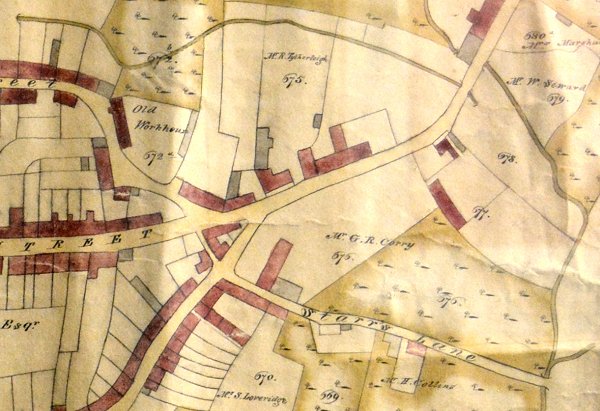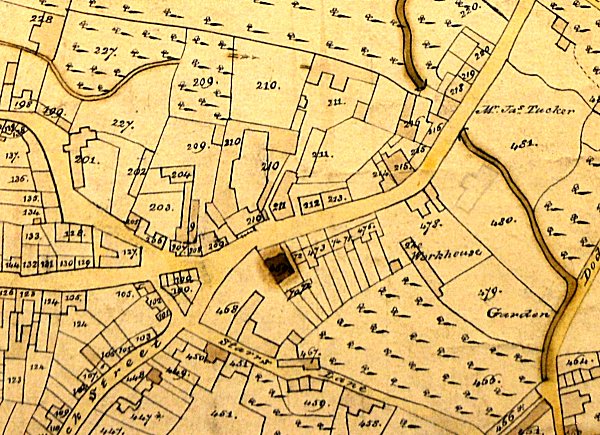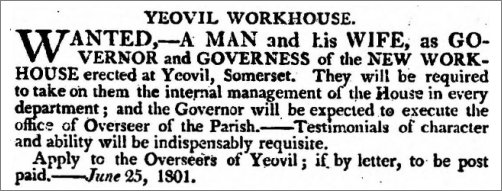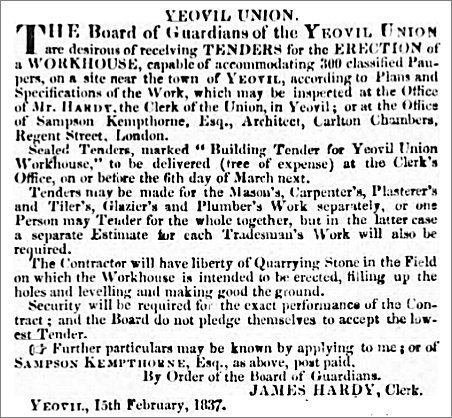workhouse (1 & 2)
workhouse (1 & 2)
Vicarage Street and Lower Middle Street
A parliamentary report of 1777 recorded a parish workhouse in operation in Yeovil for up to 60 inmates. E Watts' 1806 map of Yeovil, below, shows 'Old Workhouse' and grounds in Vicarage Street close to the site now occupied by the Methodist church and the Quedam's Ivel Square.
However in 1799 land had been purchased for a new workhouse to be build off Middle Street. It was set at right angles to Middle Street and set back slightly within a plot of land approximately where Wilkinson’s store is today and had another plot, called the Workhouse Garden, behind it.
The workhouse
was run by a man
and wife
Governor and
Governess (see
advertisement
below) who took
on the complete
management of
the institution.
The Governor
also acted as
the Overseer of
the parish.
It was named on
Watt’s map of
1831 and appears
in the 1841
census as the
‘Old Workhouse,
Townsend’ with
nine people
living there as
by this time the
new workhouse
in Preston Road
was in
operation. The
buildings appear
on Bidder’s map
of 1843,
although not
named, and were
later used as a
wool store by
glove
manufacturer and
wool dealer
Elias Whitby Snr.
The 1854 to 1864 Burgess Roll and Valuation List showed that James Hooper Whitby was the owner of the Old Workhouse and garden.
MAP

E Watts' map of 1806 shows the 'Old Workhouse' in Vicarage Street (on the site currently occupied by the Methodist church which opened in 1870) towards top left. Middle Street runs from centre left to top right and Starrs Lane is bottom right. At centre right Parcel 677 is the 'new' Workhouse with the Workhouse Garden below and to the right. Parcel 678, running alongside the conjoined Milford Brook and the Rackle Brook, was called the Withy Bed.

Watts' map of 1831 by which time the 'old workhouse' is not named as such whereas the 'new' workhouse and its garden are.
gallery

An advertisement placed in the 29 June 1801 edition of the Salisbury and Winchester Journal seeking a Governor and Governess for the 'new' workhouse.

This notice requesting tenders for the erection of the new Workhouse that would be erected in Preston Road was placed in newspapers across the country during February 1837.

Children in the care of the parish were invariably forced into an apprenticeship; usually domestic service for girls and animal husbandry or agriculture for boys. The child received no payment which, if any, went to the parish for their keep. Apprenticeships were not popular and runaways, as this notice in the 15 September 1800 edition of the Sherborne Mercury, were common.